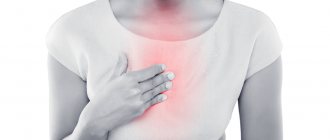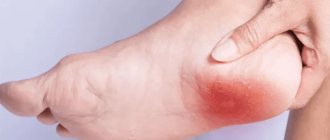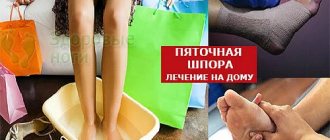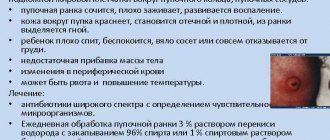Release form and composition
The drug is produced in the form of a solution for external use (alcohol): a colorless transparent liquid with the smell of ammonia (80 or 100 ml in an orange glass bottle with a screw neck, or in a polymer bottle, or in an orange glass jar, 1 bottle or 1 jar in a cardboard box complete with instructions for use Ammonia + Glycerol + Ethanol; it is possible to place bottles/cans in group packaging - a cardboard box).
100 ml of solution contains:
- active ingredients: ammonia solution 10% - 25 ml, ethanol 95% - 25 ml, glycerol - 25 g;
- additional components: purified water – up to 100 ml.
Skin xerosis. Part 2: treatment
Dry skin is a constant symptom of various skin diseases, such as atopic dermatitis, psoriasis, eczema, etc. It has now been proven that the constant use of combined moisturizing and lipid-restoring skin products is an essential component in the treatment of many dermatoses [1]. Restoring the damaged epidermal barrier becomes a priority for dry skin. The higher the skin's permeability to water, the deeper the surfactants (surfactants) of detergents, microbes and toxins penetrate into it, causing an inflammatory reaction and the formation of free radicals in the skin. Dry skin is cyclical in nature with an age-related tendency to worsen the condition, so rational cosmetic care adapted to the physiology and structure of the skin is very important. Moisturizers reduce the subjective feeling of tightness, dryness, discomfort, increase the elasticity and tolerance of the skin, even out the microrelief and color of the skin, and strengthen the water-lipid mantle.
The increase in the number of moisturizers with different mechanisms of action occurs in parallel with increasing knowledge about the physiology of the stratum corneum. The study of the epidermal barrier (primarily the lipid matrix) led to the creation of a new therapeutic direction in dermatology - “corneotherapy”. “Corneotherapy” - “treatment of the stratum corneum” (from Latin corneum - horny and English therapy - treatment). It was proposed by the famous American dermatologist Albert Kligman, who has the honor of discovering the role of retinoids in the treatment of acne. A. Kligman became a pioneer in research into the physiology of the outer skin, which led to the development of the concept of the “living stratum corneum”.
You can eliminate dryness of the stratum corneum in various ways:
1) creation of an occlusion on the skin surface that prevents transepidermal water loss (TEWL); 2) use of replacement therapy; 3) use of emollients; 4) creation of osmotic humidification; 5) restoration of the epidermal barrier; 6) use of hygroscopic agents; 7) activation of aquaporin synthesis.
Creation of an occlusion on the skin surface that prevents transepidermal moisture loss. Probably the oldest method of moisturizing is the use of substances that create a waterproof film on the surface of the skin that prevents evaporation. In this way, a compress effect (occlusive dressing) is achieved, which restores and improves the diffusion of fluid from the capillaries of the dermis into the epidermis. Moisturizers with an occlusive effect are used mainly in dermatology, in the treatment of diseases accompanied by increased skin dryness and inflammatory processes, in cosmetology after plastic surgery, such as skin resurfacing, and also to protect the skin during frequent contact with detergents. It is important to remember that this method can be used when the properties of intercellular lipids are undisturbed. This method allows you to capture and redistribute moisture throughout the entire thickness of the epithelium. Although, according to Koshevenko Yu. N. (2008), such occlusion leads not only to a slowdown in the restoration of the barrier function of the epidermis, but also to a disruption in the secretion of lamellar bodies [2].
Occlusive type humidifiers include:
1) fatty acids (lanolin, stearic, etc.); 2) fatty alcohols (lanolin, palmitic, caprylic, etc.); 3) hydrocarbon oils and waxes (vaseline, paraffin, mineral oils, squalene); 4) phospholipids; 5) waxes of plant and animal origin (carnauba wax, lanolin); 6) solid vegetable oils (cocoa, shea, coconut, macadamia, etc.).
Traditionally, in dermatology, for dry, non-oily skin, lipophilic creams of the “water in oil” type are used; such creams are difficult to wash off and, due to the occlusive effect, do not allow the skin to lose moisture and protect against overdrying [3].
Vaseline is the most reliable and proven occlusive coating in dermatology. It is used in products intended to moisturize the skin for psoriasis, atopic dermatitis, etc., as it retains moisture in the skin very well. On the one hand, Vaseline creates a physical barrier to evaporating moisture, on the other hand, it “glues” the horny scales together, resulting in a decrease in the area of contact between the intercellular spaces and the air, which inhibits the process of transepidermal water evaporation. A gel containing 5% petroleum jelly reduces TEWL by 98%. However, moisturizing the skin with Vaseline can be regarded as passive, since it only helps to retain the moisture that is already in the stratum corneum. Another option for hydration - active - is that hygroscopic substances that are capable of binding and retaining water through ionic interactions are introduced into the stratum corneum [4].
Vaseline is currently practically not used in cosmetology, since it is subjectively uncomfortable to use: it is poorly absorbed, shiny, and leaves a feeling of a sticky film. Some cosmetologists recommend Vaseline-based creams to protect the skin during the winter. However, studies have shown that petroleum jelly creates a deceptive sensation of warmth and thereby increases the likelihood of frostbite [5, 6].
Moisturizers intended for the winter period often include saturated fats (goose, badger, bear). Cosmetics containing saturated fats soften the skin well, protect it from frostbite and drying out, but it is not recommended to use it constantly [5].
It should be added that at low temperatures, moisture evaporates from the surface of the skin very quickly, so the prevailing opinion that there is no need to use moisturizers in winter is nothing more than a misconception. It is important to choose them correctly. Winter products should not form too dense an occlusive film and disrupt tissue respiration processes. Such preparations usually include shea butter, jojoba, and macadamia oil, which are quickly absorbed by the skin and create a thin, mobile film without disturbing natural processes. In the winter season, you should be wary of products containing hyaluronic acid and urea, which excellently retain moisture, but in the cold they turn into a crust, resulting in damage to skin vessels.
Recently, silicone occlusive coatings (for example, dimethicone) have become popular, which are widely used in plastic surgery after laser resurfacing, dermabrasion, and other operations. Silicone film, like Vaseline, retains moisture in the skin, preventing stress caused by disruption of the epidermal barrier [5, 7–9].
Occlusive moisturizing creams quickly eliminate dry skin, reduce inflammation and itching in skin diseases, however, they do not eliminate the causes of skin dehydration and can cause local tissue swelling, so they are not suitable for everyone. Thus, if the process of normal restoration of the barrier structures of the stratum corneum is disrupted, for example, in certain skin diseases, occlusive creams are necessary. If there is a chance of restoring the stratum corneum barrier, they should be used only in emergency cases. They are contraindicated for people with healthy skin, as they can disrupt the barrier properties of the epidermis [2].
Replacement therapy. In order to increase the moisture content of the stratum corneum, the same substances that are part of the natural moisturizing factor are added to cosmetics. These are urea, amino acids (serine, glycine, alanine, proline), minerals (magnesium, potassium, sodium, calcium), sodium pyrroglutamate (Na-PCA), lactic acid. Penetrating into the thickness of the stratum corneum, they are localized around corneocytes and create a kind of aqueous membrane [10]. Such humidification has a delayed but prolonged effect and is least dependent on air humidity. The result lasts until the moisturizing components are removed along with the horny scales [5, 8, 10].
Urea is introduced into cosmetic formulations in a concentration of about 5%. Not recommended for use in cosmetics for sensitive skin and children's cosmetics. Has moisturizing, exfoliating and antimicrobial effects. When a person sweats, part of the sweat evaporates, and urea remains on the surface of the skin, adsorbs moisture from the air and retains it in the stratum corneum. It is capable of destroying hydrogen bonds of protein chains, changing the configuration and state of aggregation, promoting the binding of water to the surface of the protein. The small urea molecule penetrates well into the skin, so it can simultaneously serve as a conductor for other active ingredients included in the cosmetic product [5, 6, 9].
Lactic acid. According to research, lactic acid and its salts (lactates) act not only as a hygroscopic agent, but also enhance the synthesis of ceramides by keratinocytes. The L-isomer of lactic acid exhibits the greatest activity and significantly (up to 48%) increases the content of ceramides in the stratum corneum. The introduction of lactic acid into the stratum corneum significantly increases its elasticity, eliminates the symptoms of xerosis and reduces the degree of TEWL. Thus, lactic acid has a moisturizing, exfoliating, and antimicrobial effect [5, 6, 8, 10].
Sodium pyrroglutamate (Na-PCA) is formed in cells during the process of keratinization from the filaggrin protein, and is used in cosmetics as a moisturizing ingredient. The best results are obtained by introducing Na-PCA into liposomes [6, 10].
Amino acids . Of the amino acids that make up NMF, serine, lysine, valine, and citrulline are used in cosmetology. As a rule, not pure amino acids are added to cosmetic preparations, but protein hydrolysates (for example, soy, silk, milk proteins). When sericin (silk protein) is applied in the form of a hydrogel on the skin surface, deep and prolonged hydration of the skin, restoration of the amino acid component NMF, and smoothing of the skin microrelief are observed [5, 8].
Procedures using silk protein involve the application and dissolution of silkworm cocoon fibers directly onto the skin and the absorption of this hydrolyzate by the skin. The chemical name for these fibers is fibroin, a fibrillar protein with a molecular weight of 55,000–100,000 daltons. In their natural state, fibroin fibers are interconnected by the so-called “silk rubber” (sericin protein). In order to keep the fibroin fibers in a dry state, scientists were able to separate the protein bodies from each other and then reunite them during the procedure. Some of the peptides and amino acids gradually penetrate into the stratum corneum, retaining moisture in it for a long time [6].
Emollients . To give the finished product optimal sensory characteristics and regulate occlusive properties, ester emollients are added to moisturizers. Based on polyunsaturated fatty acids (vegetable oils), emollient moisturizers are created that fill the space between exfoliating stratum corneum, replace defects in the stratum corneum formed as a result of excessive desquamation of corneocytes, and replenish the lack of surface lipids. Emollients allow you to adjust the degree of occlusion and provide a quick and prolonged softening effect. Animal studies indicate that this type of moisturizer can cause comedones. Thus, the use of occlusive-type moisturizers is justified in cases where it is necessary to urgently block the transepidermal loss of moisture from the skin and maintain the level of hydration necessary for the normal functioning of cells. Such properties are possessed by a series of post-peeling skin care products and hand products that experience daily attacks from surfactants in detergents and destroy the lipid barrier [8, 10, 11].
Osmotic hydration is achieved by increasing the concentration of osmotically active ingredients. As is known, the hydrobalance of the skin is normalized by the mineral substances that make up the thermal waters. Currently, they are used mainly in the form of aerosols. Vaporized onto the stratum corneum, they increase its osmotic pressure. At the same time, water from the underlying layers enters the stratum corneum and is retained in it, normalizing the concentration of salts and restoring the natural water balance. As a result, the water content increases [10].
Restoration of the epidermal barrier . To restore the epidermal barrier, lipids are used both in the form of pure oils and in combination with other ingredients. It has been proven that local application of lipids (ceramides, phospholipids, triglycerides) accelerates the restoration of the lipid barrier of the skin, with the optimal ratio of ceramides, fatty acids and cholesterol being 1:1:1–3:1:1. The process of restoring the epidermal barrier is a long process and occurs only after the epidermal cells receive the necessary building material and produce a sufficient amount of ceramides and other epidermal lipids from which the epidermal layers will be built [6].
In the 90s, the sympathies of cosmetics manufacturers turned away from the use of natural oils, since silicones came into cosmetic production (in the list of ingredients they can be distinguished by the ending “con”, for example, simethicone, cyclodimethicone, etc.), synthetic derivatives of fatty acids ( they usually have complex names, such as isopropyl myristate, etc.) and other achievements of cosmetic chemistry. With these substances, it became possible to create cosmetics with precisely specified characteristics, which is very difficult with natural oils. However, it was later found that the skin can extract the fatty acids it needs from fats and oils and use them to synthesize its own epidermal lipids, prostaglandins and other regulators of local immunity. Fatty acids enter the skin, as a rule, with natural oils containing essential fatty acids (linoleic, linolenic, arachidonic, as well as their derivatives - gamma-linolenic, arachidonic and some others). More often in cosmetics, olive, soybean, corn oils or oils of black currant, borage, borage, and evening primrose are used [6].
Since these oils are easily oxidized, antioxidants are added to them - vitamin E, carotenoids. It is useful to use oils that themselves have an antioxidant effect - avocado oil, shea butter, grape seed oil, wheat germ oil, rice bran oil. Oils with a high content of unsaponifiable fraction (linseed, soybean, shea, wheat germ) additionally have a phytoestrogenic effect and high anti-inflammatory properties.
But you should always remember the downside of cosmeceuticals based on oils and fats. For example, triglycerides create occlusion and disrupt regeneration processes, preventing the natural moisturizing factor from working, i.e., receiving moisture from the air. Mineral oils also cause occlusion; among other things, they increase the skin’s sensitivity to ultraviolet radiation, which can lead to photosensitivity and hyperpigmentation, so in the summer you should not be overzealous with preparations with a high content of triglycerides and mineral oils.
Ceramides have recently become very popular ingredients in cosmetics. The popularity of ceramides is due to the role they play in maintaining the integrity of the epidermal barrier. Due to the presence of a multilayer lipid layer between the horny scales, the stratum corneum is able to effectively protect the skin not only from the penetration of foreign substances from the outside, but also from dehydration.
To transport hydrophilic active substances into the epidermis, transdermal carriers are often used - complexes of hydrophobic molecules surrounding the active components. The most popular transdermal carriers are liposomes—capsules built from ceramides or phospholipids. The liposome wall consists of a lipid bilayer, and the internal hydrophobic space contains biologically active substances.
Liposomal preparations based on ceramides have a good cosmetic effect, but they are quite expensive and difficult to produce due to the low solubility of ceramides in water. Recently, emulsions based on saturated phospholipids (they are similar to ceramides, but have two hydrophobic tails) have become increasingly popular. These can be liposomes or flat membrane-like structures (lamellae). Such phospholipids form crystal structures similar to the structure of the lipid layers of the stratum corneum. When exposed to a damaged stratum corneum, liposomes or lipid lamellae are embedded in areas deprived of lipids, thereby temporarily restoring the epidermal barrier [2, 6, 10].
Fundamental research in the field of cytology, biochemistry and biophysics of the skin has led to the emergence of a new drug that maintains water balance in the skin - the dermal membrane structure (DMS®) of the cream imitates the natural structure of the arrangement of epidermal lipids. DMS has a lamellar structure and undetectable particle sizes, in contrast to the drop-shaped structures of traditional creams. It is this technology that is used to create Physiogel cream, which has a full set of lipids identical to the lipids of the epidermis. A feature of this cream that distinguishes it from other creams is a special substance - hydrogenated phosphatidylcholine (HPC). As is known, natural phosphatidylcholine is a key component of keratinocyte cell membranes. In the stratum corneum it serves as a source for sphingomyelin and ceramides. Hydrogenated phosphatidylcholine, which is part of Physiogel, is essentially a skeleton on which the lipids of the cream are fixed, creating a natural self-emulsifying system. This system provides the cream with a number of properties:
- there is no ability to form emulsions in the form of “water in fat” or “fat in water”;
- forms the lamellar structure of DMS (lamellar structures consisting of bilipid layers that retain physiological lipids);
- able to penetrate deep into the stratum corneum of the epidermis;
- enhances skin barrier properties and photoprotection.
The use of “self-emulsifying” systems based on phosphatidylcholine minimizes the risk of irritation and justifies its use for the treatment of chronic dermatoses. DMS ensures the “correct” penetration of lipids - it is embedded in the stratum corneum, but does not penetrate deeper.
Scientific studies conducted using instrumental research methods (electron micrographs and determination of corneometry) have established that by the 14th day of comparative testing of various creams, Physiogel has indicators that are not inferior to other creams in terms of the degree of skin hydration. But by the 28th day, the moisture content increases 4 times and is far ahead of other creams. These studies prove that Physiogel cream does not provide passive hydration, but active one, restoring the natural water-saving structure of the epidermis.
It should be remembered that the process of skin restoration occurs slowly. Therefore, the effect of using Vaseline, emollients and moisturizers will be more noticeable than the effect of using creams containing essential fatty acids. Since polyunsaturated fatty acids cannot be an emergency treatment for barrier breakdown, they must be taken regularly to prevent the occurrence of deficiency conditions.
Moisturizing the skin with hygroscopic agents. For normal skin without gross pathologies, non-occlusive moisturizers are used. Usually these are gels containing hygroscopic substances (proteins, polysaccharides, glycosaminoglycans).
Glycerin is an effective humectant under normal atmospheric humidity conditions. Glycerin is hygroscopic, but has high volatility, which negatively affects the duration of the moisturizing effect. Glycerin does not have the ability to penetrate deep into the stratum corneum, so its effect is superficial. But it softens the skin, lowers the freezing point of liquid (prevents the cream from freezing on the face on a frosty day), and in humid air it works as a skin moisturizer, attracting moisture from the atmosphere. However, in dry air it has the opposite effect - it draws water from the stratum corneum, so upon short-term contact with the skin it has a moisturizing effect, but then, on the contrary, it aggravates the dryness of the skin, drawing moisture from it. For example, sorbitol is less hygroscopic than glycerin, so there is less risk of skin drying [4].
Propylene glycol is used as a solvent in cosmetic formulations (replaces water). Non-toxic, softens the skin, reduces the freezing point of liquids, and has an antimicrobial effect. It is highly hygroscopic, however, like glycerin, in a dry atmosphere it can draw water from the stratum corneum [4].
Hyaluronic acid (HA) is a glycosaminoglycan, which is the main component of the intercellular matrix of living tissues. Until recently, HA was spoken of as the main substance of the intercellular substance of the dermis. However, recent studies indicate that HA performs essential functions in the epithelial layer of the skin and enters the epidermis not from the dermis, but is synthesized by the corneocytes themselves [12, 13]. In this case, the synthesis of molecules with a very large molecular weight occurs - about 2 million kDa, and the catabolism of HA also occurs in the lysosomes of keratinocytes. This natural polysaccharide takes an active part in the proliferation, differentiation and migration of keratinocytes, therefore its amount is under the control of various regulatory molecules and is maintained at a level of 0.1 mg/kg.
HA is a very popular ingredient in skin care products. Cosmetic preparations with HA have a pronounced moisturizing effect due to the formation of a thin film on the surface of the skin, which helps reduce TEWL, which actively absorbs moisture from the air. This helps to increase the free water content in the stratum corneum, and also creates an “additional moisture” effect, which helps reduce the evaporation of water from the surface of the skin. As is known, HA is able to penetrate into the deep layers of the skin and transport substances associated with it or enclosed in its mesh structure.
Soluble collagen, due to its hygroscopic properties, forms a moisturizing film on the skin, thus reducing water loss through the stratum corneum.
Chitosan is a polysaccharide obtained from the shells of marine crustaceans. Forms a moisturizing film on the skin, softens the skin and protects it from damage.
Beta-glucan is a polysaccharide obtained from the cell wall of baker's yeast. Forms a moisturizing film on the skin, protects the skin from UV radiation, and has an immunostimulating effect.
Activation of aquaporin synthesis. As stated in the first part of the article, transmembrane proteins aquaporins play an important role in maintaining normal levels of skin hydration. The human epidermis contains the main skin aquaporin, aquaporin-3 (AQP-3), located on the keratinocyte membrane.
In skin pathologies characterized by impaired barrier function and dry skin, changes in the expression of aquaporins are observed. An interesting fact is that the expression of AQP-3 decreases in direct proportion to the degree of exudation in eczema, while at the same time its increased expression is noted in atopic dermatitis [14–16].
When the AQP-3 content decreases, the hydration of the epidermis and the barrier function of the skin are disrupted, and its elasticity decreases. In addition, it has been proven that with age, the amount of AQP-3 in the epidermis decreases, which is the main reason for the decrease in hydration levels of aging skin. Currently, an active search is underway for compounds that stimulate the synthesis of aquaporins. Modulation of their expression is one of the promising ways to moisturize the skin [14–16].
In conclusion, it must be emphasized that we are talking not only about auxiliary therapy of cosmeceuticals during an exacerbation, but also about a very important issue - securing remission by actively restoring the integrity of the skin and its normal function with the help of therapeutic and cosmetic products. Today, a doctor’s arsenal includes a sufficient number of moisturizing and softening therapeutic and cosmetic products specially created for caring for the skin of patients, and the ability to navigate them is the key to the success of therapy.
Literature
- Lomakina E. A. The role of the barrier function of the skin in the pathogenesis of some dermatoses // Modern problems of dermatovenereology, immunology and medical cosmetology. 2009, no. 2. pp. 87–90.
- Koshevenko Yu. N. Human skin. T. 2. M.: Medicine, 2008. 754 p.
- Lulman H. Visual pharmacology. M.: Mir, 2008. 383 p.
- Hernandez E. Polyhydroxy acids against ichthyosis // Peelings. 2010, no. 1. pp. 18–22.
- Timofeev G. A. Methods of hardware research of human skin // Cosmetics and medicine. 2005; 4:30–36.
- Margolina A. A., Hernandez E. I., Zaikina O. E. New cosmetology. M., 2002. 208 p.
- Modern external therapy of dermatoses (with elements of physiotherapy) / Under. edited by N. G. Korotky. Tver: “Provincial Medicine”, 2001. 528 p.
- Puchkova T.V. Explanatory dictionary of cosmetics and perfumery. M.: School of cosmetic chemists, 2005. 192 p.
- Ivanova L., Podolyak S. Active moisturizing components in cosmetics // Journal of applied aesthetics Les Nouvelles Esthetique. 2008, no. 3. pp. 125–132.
- Hernandez E.I. Skin hydration. M.: LLC "Firm Clavel", LLC "School of Cosmetic Chemists", 2007. 32 p.
- Timofeev G. A. Dry skin. Functional diagnostics. Tactics // Cosmetics and medicine. 2007, no. 2. pp. 58–62.
- Koshevenko Yu. N. Human skin. T. 1. M.: Medicine, 2006, 360 p.
- Myadlets O. D., Adaskevich V. P. Morphofunctional dermatology. M.: Medlit, 2006. 752 p.
- Tkachenko S., Hernandez E. Aquaporins in the regulation of skin water balance // Cosmetics and medicine. 2011, no. 2. pp. 26–33.
- Cork MJ, Robinson DA, Vasilopoulos Y. et al. New perspectives on epidermal barrier dysfunction in atopic dermatitis: gene-environment interactions // J Allergy Clin Immunol. 2006; 118(1):3–21.
- Wilkinson JD The skin as a chemical barrier. In: The Physical Nature of the Skin. Marks RM, Barton SP, Edwards C. eds. MPT Press, 1988: 73–78.
Yu. A. Gallyamova, Doctor of Medical Sciences, Professor O. A. Barinova
GOU DPO RMAPO, Moscow
Contact information for authors for correspondence
Ammonia + Glycerol + Ethanol, instructions for use: method and dosage
Ammonia + Glycerol + Ethanol is intended for external use.
It is recommended to rub the solution 2-3 times a day into hand skin that has been washed with soap and thoroughly dried. Therapy with the drug is carried out as needed, until the symptoms of the disease subside.
If after a course of treatment no improvement is observed, a worsening of symptoms is recorded, or new signs of damage appear, it is necessary to consult a specialist.
There are no specific effects of the drug upon its first application or upon withdrawal.
Causes of rapid aging of hand skin
One of the main reasons for early changes and premature aging of the skin of the hands is exposure to ultraviolet radiation, that is, sunlight (this is the so-called photoaging). It leads to the formation of wrinkles of varying depths. As a result:
- the dermis becomes very thin;
- skin volume is lost;
- Pigmentation appears on the hands.
The skin daily experiences the effects of negative factors from the outside: a person regularly wets his hands, immerses them in water, washes dishes without gloves, exposing his hands to the chemicals that make up the detergent compositions.
In winter and autumn, with a decrease in air temperature, so-called “pimples” and small cracks form on the skin, and in the summer, when it is hot, the dermis dries out, and pigment spots form on the surface.
The condition of the skin is influenced by:
- hormonal imbalance;
- problems of metabolic processes - disruptions in the functioning of the endocrine system, digestive disorders, intoxication of the body;
- untimely or improper care of the skin of the hands.
Cigarettes, regular lack of sleep, stressful situations, consumption of junk food, excessive alcohol consumption - all this provokes problems, entails hormonal imbalance, which, like a chain, leads to early age-related changes in the skin on the hands.
If a woman is young and takes good care of herself, but her hands are flabby and wrinkled, she should consult a specialist, since only a doctor can accurately diagnose the cause of aging, choose the right method of rejuvenation, and solve the problem as efficiently as possible.
special instructions
Ammonia + Glycerol + Ethanol is for external use only.
It is necessary to prevent the solution from getting into the eyes and mucous membranes; in case of accidental contact, rinse the areas where the mucous membranes come into contact with the drug with plenty of water.
In the presence of chronic diseases, there are no particularities in the use of the drug.
Impact on the ability to drive vehicles and complex mechanisms
The drug does not have a negative effect on the ability to drive a car or other complex equipment.
How to care depending on age
The dermis of the hands ages very early. To prevent this from happening too quickly, skin care should be age-appropriate.
The recommendations are as follows:
- 20+. Caring at home at such a young age is not difficult. The base is a hand cream with glycerin substances and fatty acids. It is better to wash with products with a neutral pH, and when cleaning and other work it is important to use special gloves.
- 30+. This requires more effort and responsibility. The dermis begins to lose its tone, becomes less elastic, and reacts more strongly to negative external actions. And to restore it, more manipulations are required than before. It is better to buy creams with antioxidant elements, substances that regenerate cells and normalize blood circulation. Twice a week it is important to perform gentle scrubbing or use products with AHA. Such procedures should be used in parallel with massage.
- 40+. At this age, the dermis is already more vulnerable to external factors: severe cold in winter and scorching sun in summer provoke moisture deficiency and peeling. UV leads to the appearance of age spots, and getting rid of them is very difficult. At this age, it is recommended to include a healthy diet. We must not forget about peeling, masks, paraffin therapy and wraps.
- 50+. When menopause has passed, the dermis becomes thinner and its protective functions become noticeably weaker. It is important to take care at home at this age systematically, every day and persistently, using cosmetic products. Anti-aging products with a high level of nutrients and moisture-retaining substances, natural oils are used. And in the summer - with a protective factor against ultraviolet rays.
For complete and high-quality care for the dermis, you can consult a doctor. In the modern world, professional techniques are used for care:
- peeling with acids: they whiten and fight fine wrinkles;
- paraffin therapy: it makes the epidermis softer;
- mesotherapy: injections of special cocktails with vitamins, peptide substances, amino acids, hyaluronic acid smooth and add shine;
- biorevitalization: hyaluronic acid is injected into the dermis through injections, this provides long-lasting hydration, increases turgor and tones, eliminates wrinkles.
Many methods are used today; the doctor selects treatment individually.
Reviews of Ammonia + Glycerol + Ethanol
Reviews about Ammonia + Glycerol + Ethanol, a dermatoprotective and softening agent for the skin of the hands, are overwhelmingly positive. Patients note that the solution effectively softens and soothes dry and inflamed hand skin, disinfects it, and also promotes rapid healing of small cracks and scratches. According to reviews, after using the drug the skin becomes elastic, soft and smooth. Patients also indicate positive results from using the product to treat rough and cracked skin on the feet - the drug eliminates dry skin, helps heal cracks and prevents their appearance in the future. The advantages of the product also include its low cost and long-lasting therapeutic effect, which is cumulative.
Almost everyone considers the disadvantage of the product to be the unpleasant and pungent smell of ammonia, which, however, quickly disappears. Sometimes tingling of the skin occurs when applying the drug, especially in the presence of scratches and micro-wounds. There are complaints about the lack of the drug on sale.
Basic recommendations
The skin on the hands is softer than on the face. It contains five times less lipids, and the palms have absolutely no sebaceous glands. This means that hands often suffer from moisture deficiency and require care treatments on a daily basis.
The minimum program includes:
- Hydration. You should always keep the cream at hand: on a shelf in your room, in the living room, in your car and in your bag with you, at work. It should be used every time your hands are washed, and when applying, perform gymnastic exercises - slightly pull each finger in turn. Cosmetologists advise using a product with glycerin elements, aloe juice, herbal extracts (at least twice a day). It is not necessary to buy a specialized cream; a traditional one will do. The main thing is that it is not overly greasy. The cream should be well absorbed.
- Peeling. Twice a week it is recommended to exfoliate the skin using scrubbing and a special exfoliant. After the procedure, be sure to apply the cream, and massage the aroma oil into the cuticle area. It is recommended to take care of the cuticle every day, this will make the nail bed softer.
- Nutrition. If the skin is excessively dry and sensitive, reacts painfully to wind and low temperatures with peeling, and after washing the skin feels tight, then at night you need to use a rich cream or a special balm. Masks have a beneficial effect on the dermis - they should be applied twice a week, in a thick layer, for 10 - 15 minutes, then washed off under the tap.
- Protection. To prevent the early formation of age spots, it is necessary to protect your brushes from ultraviolet radiation using special products with SPF. In the period April-October - in the southern regions, in May-September - in the middle zone of the country.
This is a minimum program for caring for the skin of your hands; you must follow it, then your skin will be soft, healthy, and young.








